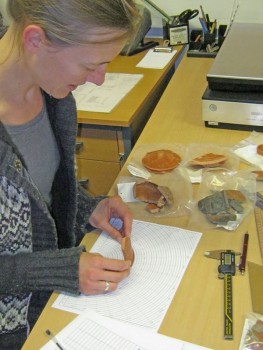
The Toolkit for Specialist Reporting represents a nationally recognised aid to anyone engaged in commissioning, planning, producing or monitoring a specialist report on finds or archaeological materials. It has been designed to be applicable to the full range of archaeological materials (artefacts, ecofacts, human remains, environmental remains, industrial waste) and can be used for specialist reporting within all kinds of archaeological projects and their various stages, including surface collection, watching briefs, evaluations, full-scale excavations, post-excavation assessments, specialist and project specific publication and reporting for archive.
The Toolkit has been created mainly to apply to development-led archaeology projects and particularly to ensure consistency in grey literature reports but can be used to ensure any specialist report is written to an accepted standard.
Most archaeological projects will work to a project design, Written Scheme of Investigation (WSI), brief or specification. These documents may include requirements to use specific standards and guidance, as well as the use of particular reference collections and recording systems. This Toolkit is not a Standard nor does it provide a template for reporting, but its use may be required or recommended in the project design or WSI.
The Toolkit is not intended to inform specialist scientific reporting, such as petrography or scientific dating. They follow different conventions that are beyond the scope of this resource. The Toolkit is also not intended to cover reports that may be written by other types of archaeological specialists such as remote sensing, earthwork or building surveys and geoarchaeology.
For some types of finds or archaeological materials there are existing Standards and guidance already in regular use and where relevant, these must be used for detailed and specific aspects of analysis and reporting. However, Standards are lacking for many other categories and the Toolkit is designed to be applied to these, providing a framework for the aspect of reporting.
The Toolkit should be used in conjunction with the CIfA Standard and guidance for the collection, documentation, conservation and research of archaeological materials (2014) (PDF, 164kb), which provides an overview of standards applied to finds work.
Definitions
- Category assemblage is used here to denote all the finds that have been categorised together, by material or object type, as a meaningful group, usually for appropriate management, treatment or analysis and reporting by a specialist (eg animal bone, coins, pottery, wood).
- Finds is the term used to include all artefacts, building materials, industrial residues, environmental material, biological remains (including human remains) and decay products (in line with CIfA Standards and guidance 2014).
- Finds specialist. An individual who is competent in, and specialises in, collecting, recording, analysing, interpreting and reporting on specific materials, objects or scientific data. A specialist will have developed expertise through the extensive study of their particular field, working to accepted standards of practice and ethics, and reporting in reputable peer reviewed sources. They should also be accredited in line with any recognition schemes in place for their field of expertise. Membership of a study group or special interest group is a valuable way of acquiring and sharing knowledge and is also recommended.
The definition of a specialist should be applied in conjunction with the following statement from the CIfA Standards and guidance (2104):
Following rule 1.4 of the Code of conduct a member shall not undertake archaeological work for which they are not adequately qualified
Trainee or novice finds specialists should always work under the guidance of an experienced and established finds specialist. This Toolkit is intended especially to assist the work of those with less experience.




